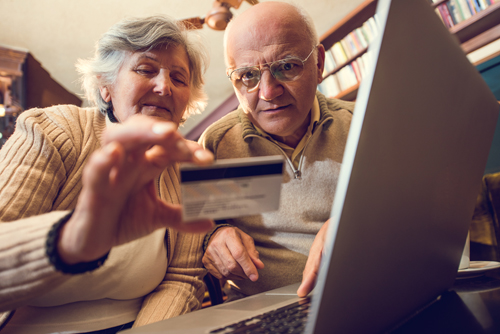Don’t Fall for “Disaster Fraud”

Steve saw Mom at her computer with her credit card out. “What are you doing?” he asked. Mom had a sad look on her face. “I’m making a donation to a charity that’s helping the Christians who are being persecuted by ISIS,” she said. Steve looked at the email Mom had received; the sender had a Gmail account and the poorly written appeal for money linked out to a CNN news report on YouTube. “Mom, this is a scam,” said Steve. “But I want to help!” said Mom.
This year, Americans have given millions to those affected by the terrible flooding in Louisiana, fires in California, earthquakes in Ecuador, the shootings in Orlando, and the plight of refugees in war-torn countries. When we hear about a natural disaster or humanitarian crisis, Americans can be very generous in their efforts to help, responding quickly by opening our hearts—and our wallets.
But the U.S. Department of Justice (DOJ) and the Federal Bureau of Investigation (FBI) warn that generous people—many of them seniors—may be victimized by crooks who take advantage of their good intentions to bilk them out of money that goes not to those who need it, but right into the scammers’ pockets.
These crooks might impersonate a real aid agency, or create a bogus organization. The might call you on the phone, come to the door, or send an appeal letter. Today they’re more likely to approach victims by email, or to spread an appeal for money via Facebook. They create a sense of urgency that can trick us into letting our guard down.
In 2015, responding to widespread fraud in the wake of Hurricane Katrina, the Department of Justice joined with more than 20 federal agencies to form the National Center for Disaster Fraud (NCFD). NCFD experts warn consumers to follow the following guidelines before making a donation of any kind:
- Do not respond to any unsolicited (spam) incoming e-mails, including by clicking links contained within those messages, because they may contain computer viruses.
- Be cautious of individuals representing themselves as victims or officials asking for donations via e-mail or social networking sites.
- Beware of organizations with copycat names similar to but not exactly the same as those of reputable charities.
- Rather than following a purported link to a website, verify the existence and legitimacy of nonprofit organizations by using Internet-based resources.
- Be cautious of e-mails that claim to show pictures of the disaster areas in attached files, because those files may contain viruses. Only open attachments from known senders.
- To ensure that contributions are received and used for intended purposes, make donations directly to known organizations rather than relying on others to make the donation on your behalf.
- Do not be pressured into making contributions; reputable charities do not use coercive tactics.
- Do not give your personal or financial information to anyone who solicits contributions. Providing such information may compromise your identity and make you vulnerable to identity theft.
- Avoid cash donations if possible. Pay by debit or credit card or write a check directly to the charity. Do not make checks payable to individuals.
- Legitimate charities do not normally solicit donations via money transfer services.
- Most legitimate charities maintain websites ending in .org rather than .com.
Suspected fraudulent activity can be reported to the NCDF hotline at 866-720-5721; report internet fraud to the FBI’s Internet Crime Complain Center (www.ic3.gov).
Steve went over the above points with his mom, and helped her use the Federal Trade Commission’s Charity Checklist to find reputable organizations to which she might donate—while also encouraging her to budget carefully before making charitable donations of any kind.
Source: IlluminAge AgeWise; guidelines provided by the National Center for Disaster Fraud
![Health Concepts [logo]](https://healthconceptsltd.com/wp-content/themes/healthconcepts-corporate/images/logo.png)
